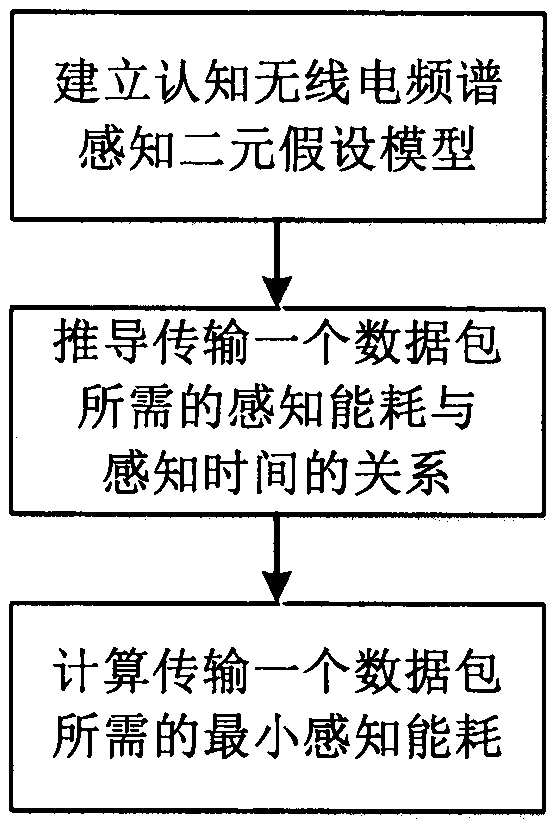A Single-Channel Energy-Efficient Spectrum Sensing Method Based on Sensing Performance
A spectrum sensing, single-channel technology, applied in the field of single-channel energy-efficient spectrum sensing based on sensing performance, can solve the problem of not considering sensing performance requirements, and achieve the effect of small sensing energy consumption
- Summary
- Abstract
- Description
- Claims
- Application Information
AI Technical Summary
Problems solved by technology
Method used
Image
Examples
specific Embodiment approach
[0017] 1. Establish a binary hypothesis model for cognitive radio spectrum sensing.
[0018] According to whether the channel is occupied by the primary user, the channel has two states, that is, idle state and busy state, so the perception problem can be expressed as the following binary hypothesis:
[0019]
[0020] where H 0 Indicates that the channel is idle; H 1 Indicates that the channel is occupied by the primary user; w(n) represents independent and identically distributed zero-mean additive white Gaussian noise, and its variance is h(n) represents the channel gain; s(n) represents the primary user signal.
[0021] 2. Deduce the relationship between the perceived energy consumption and the perceived time required for the secondary user to transmit a data packet.
[0022] According to the related theory of energy detection, the detection probability of the secondary user to the primary user can be expressed as:
[0023]
[0024] where Q(·) is the complementar...
PUM
 Login to View More
Login to View More Abstract
Description
Claims
Application Information
 Login to View More
Login to View More - R&D
- Intellectual Property
- Life Sciences
- Materials
- Tech Scout
- Unparalleled Data Quality
- Higher Quality Content
- 60% Fewer Hallucinations
Browse by: Latest US Patents, China's latest patents, Technical Efficacy Thesaurus, Application Domain, Technology Topic, Popular Technical Reports.
© 2025 PatSnap. All rights reserved.Legal|Privacy policy|Modern Slavery Act Transparency Statement|Sitemap|About US| Contact US: help@patsnap.com



